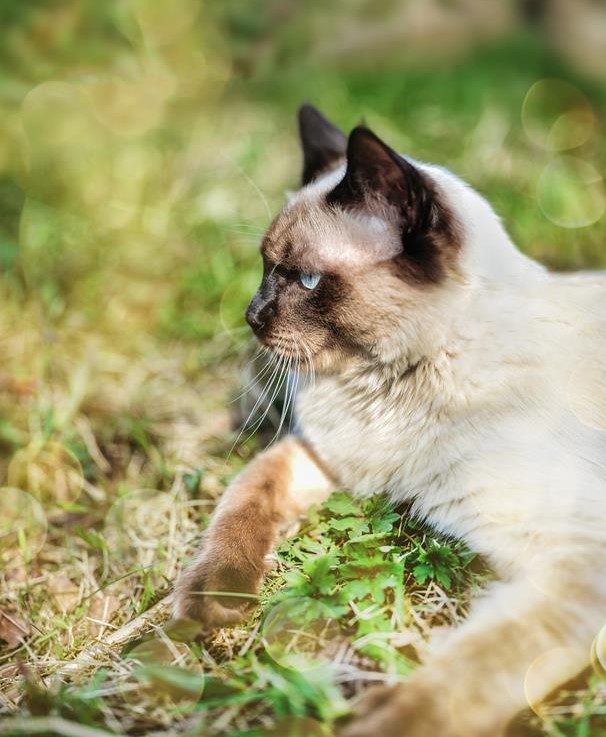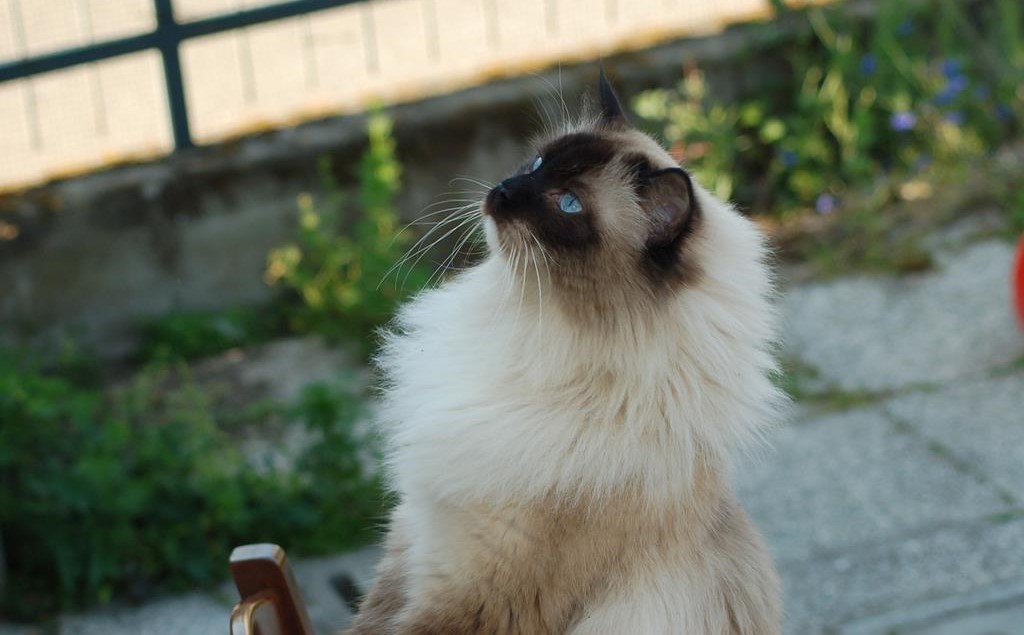Ragdoll cats, with their striking blue eyes and gentle demeanor, have captured the hearts of cat enthusiasts around the world. As winter approaches and temperatures drop, concerns about the well-being of our feline friends become more prominent. Understanding how much cold Ragdoll cats can tolerate is crucial for ensuring their comfort and safety during colder months. In this article, we delve into the cold tolerance of Ragdoll cats and provide insights into how to keep them cozy when the weather turns chilly.
Ragdolls Physiology and Cold Tolerance
Ragdoll cats, like all domestic cats, are descendants of wild ancestors that lived in a variety of climates. Their fur coats and physiological adaptations allow them to withstand a certain degree of cold. Cats have a higher basal metabolic rate compared to humans, which means they generate more body heat to maintain their internal temperature. Additionally, their fur acts as insulation, trapping warm air close to their bodies.
Factors Influencing Cold Tolerance in Ragdolls
Several factors influence how much cold a Ragdoll cat can tolerate:
- Coat Length and Density: Ragdoll cats have semi-long fur that provides them with a certain level of protection against cold weather. However, cats with thicker and denser coats may be better equipped to handle colder temperatures.
- Age and Health: Young kittens and senior cats are generally more vulnerable to extreme temperatures due to their developing or aging bodies. Cats with health conditions may also have reduced cold tolerance.
- Acclimatization: Cats that are gradually exposed to colder temperatures over time may develop some degree of acclimatization. However, extreme cold conditions can still be harmful, even to acclimatized cats.
- Humidity and Wind: Humidity and wind chill can significantly impact a cat’s ability to tolerate cold. Wet fur loses its insulating properties, and wind can make cold temperatures feel even colder.

Signs of Cold Stress in Ragdoll Cats
It’s important to recognize signs of cold stress in Ragdoll cats to ensure their well-being:
- Shivering: Like humans, cats may shiver when they are cold as a way to generate body heat.
- Seeking Warmth: If a Ragdoll cat is constantly seeking out warm spots or curling up in tight spaces, it could be a sign that they are feeling chilly.
- Reduced Activity: Cats might become less active in colder temperatures to conserve energy and stay warm.
- Cold Paws and Ears: Cold extremities, such as cold paws and ears, can indicate that a cat is struggling to stay warm.
Tips for Keeping Ragdoll Cats Warm
Ragdoll cats, with their semi-longhair coats, generally have a luxurious and thick fur that provides insulation. However, there are situations where additional warmth is beneficial, especially during colder weather or in certain environments. Here are some tips for keeping Ragdoll cats warm:
1. Provide Cozy Bedding:
- Ensure your Ragdoll has a warm and cozy bed. Choose beds with soft, insulated material to provide a comfortable and warm sleeping space.
2. Warmth in Sleeping Areas:
- Place your cat’s bed away from drafts and cold areas. Consider providing a heated cat bed or a microwavable heating pad designed for pets during colder seasons.
3. Warm Blankets or Sweaters:
- Offer your Ragdoll cat warm blankets for them to snuggle in. Some cats may tolerate wearing a cat sweater to provide an extra layer of warmth, especially if they spend time outdoors.
4. Provide Indoor Heating:
- If the indoor temperature drops significantly, consider using a space heater or adjusting the central heating to maintain a comfortable environment for your cat.
5. Ensure Access to Sunlight:
- Position your cat’s favorite resting spots in areas that receive natural sunlight. Cats love basking in the sun, and it provides them with a natural source of warmth.

6. Keep Them Inside During Cold Weather:
- During colder seasons, it’s advisable to keep your Ragdoll cat indoors to protect them from extreme temperatures, cold winds, and potential dangers.
7. Grooming for Insulation:
- Regular grooming is essential to keep your Ragdoll’s coat in good condition. A well-maintained coat provides better insulation, helping them stay warmer.
8. Check for Drafts:
- Inspect your home for drafts and seal any gaps or openings. Make sure there are no chilly drafts near your cat’s favorite spots.
9. Heated Cat Enclosures for Outdoors:
- If your Ragdoll enjoys spending time outdoors, consider providing a heated cat enclosure or shelter to protect them from the cold. Ensure it is well-insulated and provides a warm, safe space.
10. Monitor Senior Cats:
- Older Ragdoll cats may be more sensitive to temperature changes. Keep a closer eye on senior cats and provide extra warmth as needed.
11. Regular Vet Check-ups:
- Ensure your Ragdoll cat is in good health by scheduling regular veterinary check-ups. Discuss any concerns about their ability to regulate body temperature with your veterinarian.
12. Maintain Adequate Nutrition:
- Proper nutrition is crucial for maintaining body temperature. Provide a well-balanced diet and consult your veterinarian for any dietary adjustments, especially during colder months.
Verdict:
By implementing these tips, you can help ensure that your Ragdoll cat stays warm and comfortable in various environments. Pay attention to their behavior and adjust their living conditions accordingly, providing a cozy and secure space for them to thrive.
FAQs:
1. How much cold can Ragdoll cats tolerate before it becomes unsafe for them?
Ragdoll cats can tolerate colder temperatures to some extent due to their fur coats and metabolic rate. However, as a general rule of thumb, when temperatures drop below freezing (32°F or 0°C), Ragdoll cats are at risk of cold-related stress, hypothermia, and other health issues.
2. Are certain cat breeds better equipped to handle cold weather?
Some cat breeds have adaptations that make them more suited for colder climates, such as Maine Coons and Siberian cats. Their thick fur, larger size, and insulating coats contribute to their ability to tolerate colder temperatures better than short-haired breeds.
3. Can indoor cats handle colder temperatures better than outdoor cats?
Indoor cats are generally more acclimated to warmer indoor temperatures, and their tolerance for cold weather might be lower. However, even outdoor cats with thicker fur coats have their limits when it comes to extreme cold. Both indoor and outdoor cats should be protected from extremely cold conditions.
4. What are signs that my Ragdoll is too cold?
Signs that your Ragdoll might be too cold include shivering, seeking out warm spots, curling into tight spaces, reduced activity levels, and cold paws and ears. If you notice any of these signs, it’s important to provide your cat with a warm and comfortable environment.
5. Can I leave my cat outdoors during the winter?
It’s generally not recommended to leave your cat outdoors during very cold weather, especially if the temperatures drop below freezing. Cats are susceptible to hypothermia and frostbite in extreme cold conditions. If your cat enjoys outdoor time, provide short supervised sessions and ensure they have access to a warm shelter when needed.
Conclusion
In conclusion, Ragdoll cats possess some degree of natural cold tolerance due to their fur coats and physiological adaptations. However, their ability to tolerate cold varies based on factors like age, health, and the severity of the cold. It’s crucial for cat owners to observe their pets, provide them with warm and comfortable indoor spaces, and take measures to ensure their safety and well-being during colder months.



